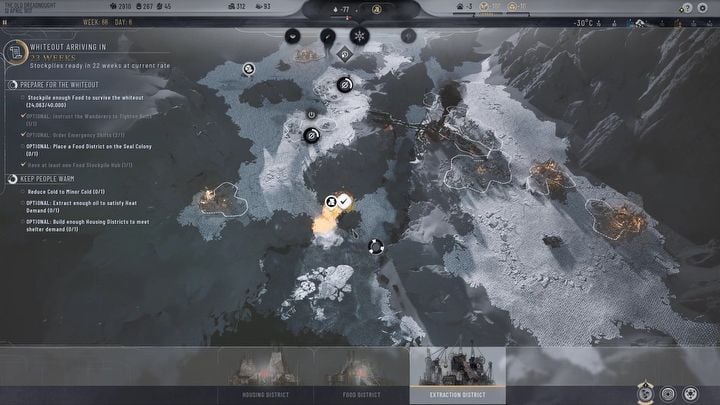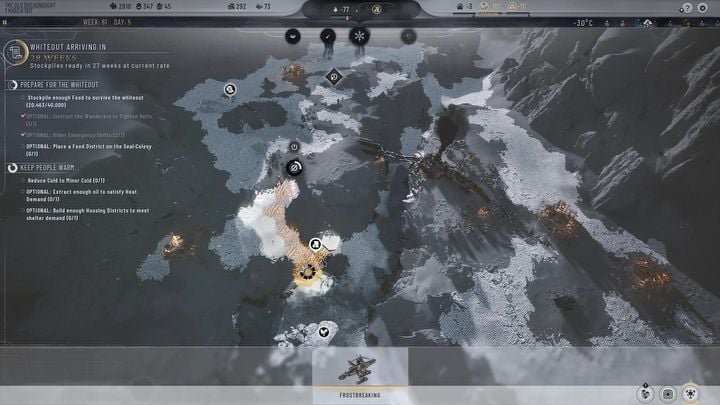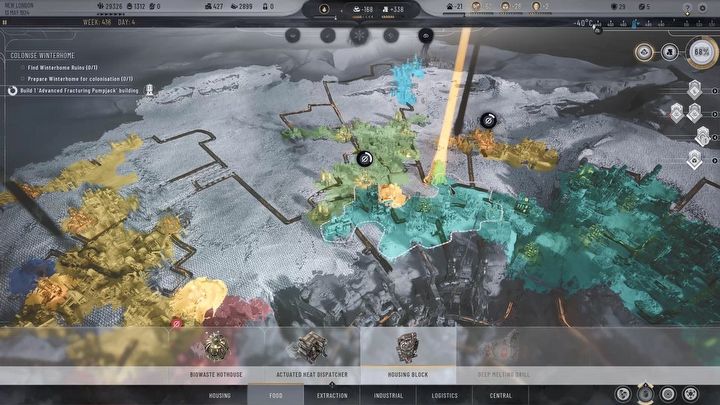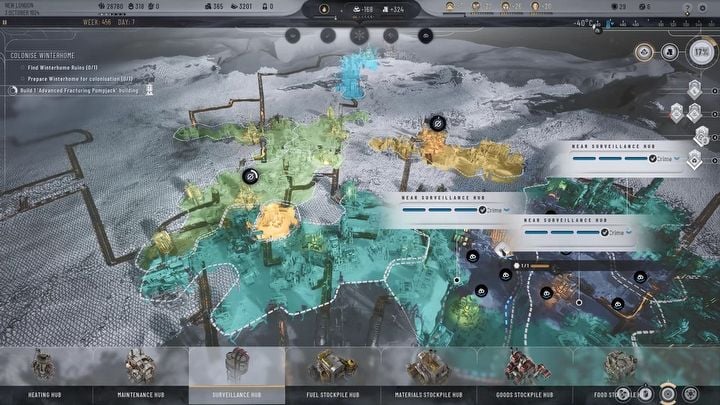Frostpunk 2: Building
The building mechanics in Frostpunk 2 have been significantly changed. On this page of the guide we describe how districts work and how to put up buildings, centers and break the ice.
The mechanics of building in Frostpunk 2 are significantly different from those in the first game. Unlike in its predecessor, the game map is now divided into hexagonal tiles on which the player can build districts. On this page of the guide we have described exactly how districts work, what types there are, how to break the ice and how buildings and hubs work.
What are districts?
Districts are the basic structures you can build in Frostpunk 2. Each district has a different function, but they are all the same size - six tiles. Building a district requires a certain amount of Heatstamps and prefabs, as well as labor force during the construction process. After its construction, a certain number of workforce is automatically assigned to the district and will work there. This district also increases the demand for heat, and thus fuel consumption - building districts around each other lowers the demand (districts have to be adjacent to each other with at least 3 tiles). Be careful when building Housing Districts, though - if they are located next to an Industrial or Extraction District, the pollution will increase the squalor and disease in your city.
While each district is made up of six tiles by default, you can expand them once they are built. The district expansion option will allow you to double its size by three adjacent fields. Expanding districts will allow you to increase resource production, cover more deposits, and add space for buildings. The slider that appears after clicking on a district can also be very useful - with it you can send off some workers from this district. It will reduce production in the district but will return some of your much-needed workforce.
The available districts are:
- Housing District - provides shelter to citizens.
- Extraction District - extracts the raw material deposits on which it was built (e.g. coal, oil, materials, prefabs).
- Food District - extracts food from food deposits.
- Industrial district - produces goods and/or prefabs.
- Logistics District - provides frostland teams for exploration outside the city.
How frostbreaking works?
Frostbreaking is a key game mechanic. Most of the fields on the map are initially inaccessible to you and covered in ice. To unlock the ability to build on these tiles, you must first use an icebreaker on them. The ice-breaking operation costs some Heatstamps and requires a certain amount of work force. Each Frostbreaker can break eight adjacent fields at once - so it is worth doing this in your free time to unlock more space for new districts and expanding existing ones.
How to construct buildings?
Buildings serve various functions - they can, for example, reduce squalor, produce additional raw materials, open access to an infinite resource deposit, heat a district, etc. To unlock them you must first research them in the research tree. You can build them only in expanded districts - each expansion unlocks a new building slot.
The buildings folder is divided into district types in which a given building can be constructed. Some buildings, such as housing blocks, can be built in various types of districts. The places where you can build a given building are marked with a black column after its selection.
What are hubs?
Hubs are special districts that only take up one tile and cannot be expanded. They serve two main roles - increasing the maximum capacity of your warehouses and boosting nearby districts. Every hub spreads around itself a zone, in which a specific bonus of this hub is active - for a given district to receive this bonus, at least three of its fields must be within the hub's zone. In the early stages of the game, you should pay particular attention to the Heating Hubs - they provide additional heat to all districts in their area, thereby reducing fuel consumption.
You are not permitted to copy any image, text or info from this page. This site is not associated with and/or endorsed by the 11 bit studios or 11 bit studios. All logos and images are copyrighted by their respective owners.
Copyright © 2000 - 2025 Webedia Polska SA for gamepressure.com, unofficial game guides, walkthroughs, secrets, game tips, maps & strategies for top games.




